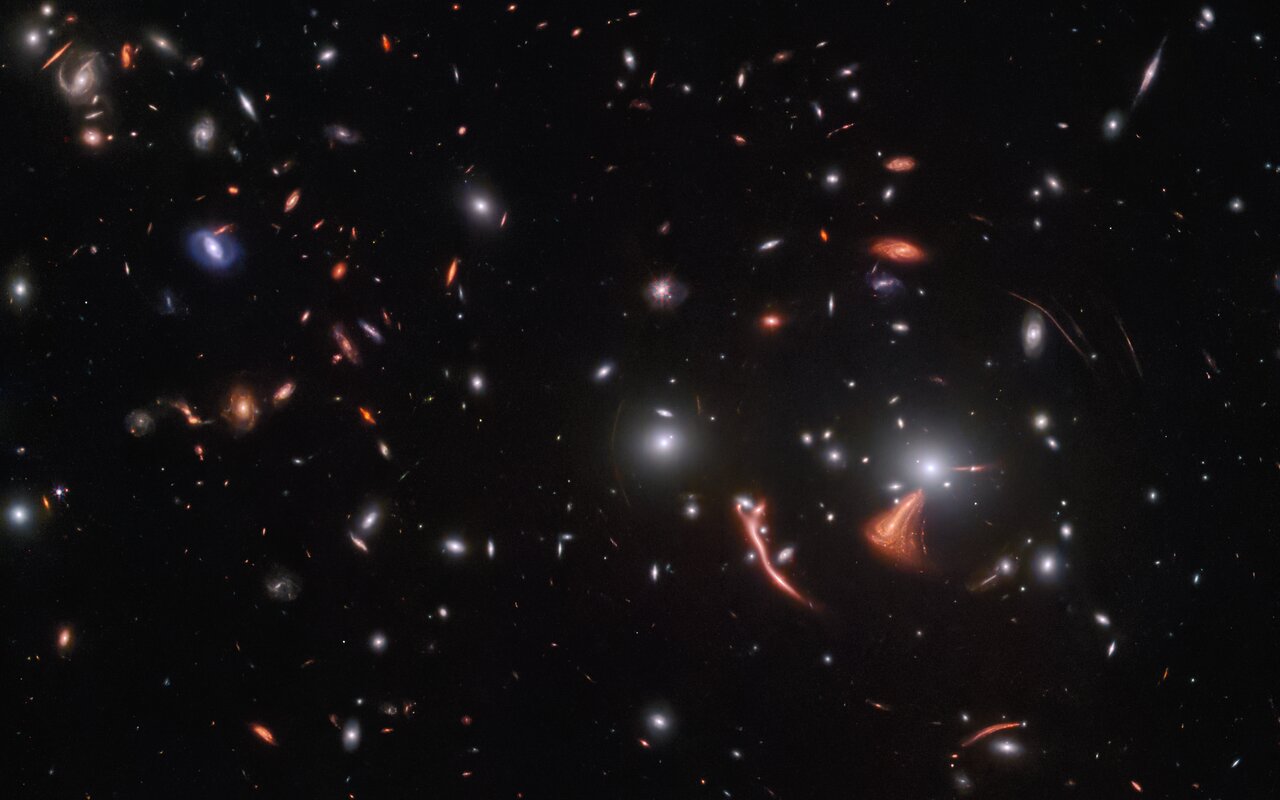
While the James Webb Space Telescope (JWST) might be the most powerful off-Earth observatory ever, there are limits to how far it can see.
Fortunately, JWST's already-sharp vision is aided by a phenomenon called gravitational lensing, as a stunning new image shows.
In the photo, from Webb's near-infrared NIRCam instrument, the Cosmic Seahorse galaxy is seen through a gravitational lens. The image shows dozens of galaxies, but in the bottom right quadrant, some of those galaxies, including the Cosmic Seahorse, look warped, appearing as smudged arcs of light.
Related: James Webb Space Telescope: Everything you need to know
That warping occurs when the gravity of a massive celestial object is so strong, it curves space-time, allowing light from behind the object to bend around it. The specific gravitational lens in this image is created by the galaxy cluster SDSS J1226+2149, which is about 6.3 billion light-years away from Earth. The Cosmic Seahorse galaxy is the large, bright smudge near the core of the gravitational lens, and it's physically located behind the cluster.
The benefit of gravitational lensing is that it not only bends light but magnifies it, too, just like a telescope lens. That allows scientists to see extremely distant galaxies like the Cosmic Seahorse, and they can even study star formation in those distant galaxies.
In fact, that's the focus of one program utilizing Webb's powerful imaging capabilities. Indeed, the new photo is just one in a series of Webb images that will contribute to astronomers' research on star formation in distant galaxies.
"As well as revealing how quickly stars form and characterizing the environments in these galaxies that gave rise to new stars, these observations will demonstrate the capabilities of Webb and provide richly detailed datasets to the astronomical community," the European Space Agency (ESA) wrote in a statement about the image.
"Astronomers expect Webb’s crystal-clear vision and cutting-edge instruments to provide new insights into star formation in distant, gravitationally lensed galaxies," ESA added.
Follow Stefanie Waldek on Twitter @StefanieWaldek. Follow us on Twitter @Spacedotcom and on Facebook.







